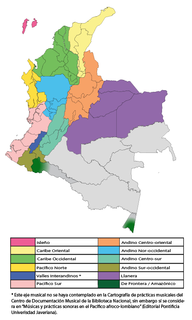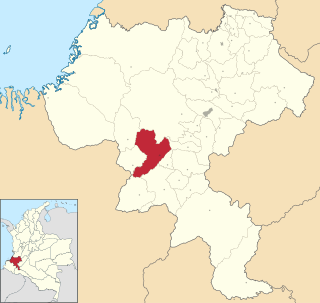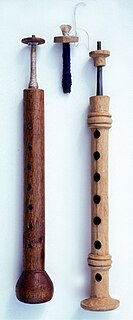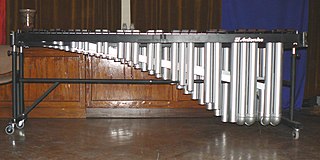
Salsa is a popular form of social dance originating in Cuba and before from United States of America U.S.A regions of New York and Puerto Rico and Cuban folk dances. The movements of Salsa are a combination of the Afro-Cuban dances Son, cha-cha-cha, Mambo, Rumba, bomba and the Danzón. The dance, along with salsa music, saw major development in the mid-1970s in New York. Different regions of Latin America and the United States have distinct salsa styles of their own, such as Cuban, Puerto Rican, Cali Colombia, L.A. and New York styles. Salsa dance socials are commonly held in night clubs, bars, ballrooms, restaurants, and outside, especially when part of an outdoor festival.

The music of Colombia is an expression of Colombian culture, ooga booga music genres, both traditional and modern, according with the features of each geographic region, although it is not uncommon to find different musical styles in the same region. The diversity in musical expressions found in Colombia can be seen as the result of a mixture of African, native Indigenous, and European influences, as well as more modern American.
The music of Ecuador has a long history. Pasillo is a genre of indigenous Latin music. It is extremely popular in Ecuador, where it is the "national genre of music." Pasillo as a genre is also present in the highland regions of Colombia and to a lesser extent, Panama and Venezuela.
The music of Belize has a mix of Creole, Mestizo, Garìfuna, and Mayan influences. After many centuries of Maya habitation, British colonizers arrived in the area in the 17th century. Belize was Britain's only colony in Spanish-dominated Central America until self-government in 1964 and gaining full Independence in 1981. Belize is still part of the Commonwealth of Nations. Far more influential than this presence, however, was the importation of African slaves.

Samba is a lively, rhythmical dance of Afro-Brazilian origin in 2/4(2 by 4) time danced to samba music whose origins include the Maxixe.

The music of El Salvador has a mixture of Lenca, Cacaopera, Mayan, Pipil, and Spanish influences. This music includes religious songs used to celebrate Christmas and other holidays, especially feast days of the saints with Tubular bells Chimes. Satirical and rural lyrical themes are common and played with Xylophone.

Central America is dominated by the popular Latin music, or Black Caribbean trends, including salsa, cumbia, mariachi, reggae, calypso and nueva canción. The countries of Central America have produced their own distinct forms of these genres such as Panamanian salsa, among others. One of the well-known forms of Central American music is punta, a style innovated by the syncretic Garifunas who live across the region, in Honduras, Nicaragua, Guatemala and Belize. The marimba, a type of xylophone, is perhaps the most important folk instrument of Central America, and it is widespread throughout the region.

Cumbia[ˈkumbja] is a folkloric genre and dance from Colombia and Panama.
Afro-Ecuadorians are an ethnic group in Ecuador who are descendants of formerly enslaved Africans brought by the Spanish during their conquest of Ecuador from the Incas. They make up from 7% to 10% of Ecuador's population.
Carimbó is a Brazilian dance. The dance was common in the northern part of Brazil, from the time that Brazil was still a Portuguese colony, originally from the Brazilian region of Pará, around Marajó island and the capital city of Belém.

African dance refers mainly to the dance of Sub-Saharan Africa, and more appropriately African dances because of the many cultural differences in musical and movement styles. These dances must be viewed in close connection with Sub-Saharan African music traditions and Bantu cultivation of rhythm. African dance utilizes the concept of as well as total body articulation.
This page is a glossary of Colombian music.
Afro-Colombians are Colombian citizens of African descent. Colombia has the fourth largest Black population in the western hemisphere, following Brazil, Haiti and the United States.

Patía is a colombian municipality located in Cauca department. The administrative centre of Patía is El Bordo.

The contribution of travel and tourism to GDP was US$5,880.3bn in 2016. Tourism generated 556,135 jobs in 2016. Foreign tourist visits were predicted to have risen from 0.6 million in 2007 to 4 million in 2017. Responsible tourism became a peremptory need for Colombia because it minimizes negative social, economic and environmental impacts and makes positive contributions to the conservation of natural and cultural heritage.
The Mapalé is an Afro-Colombian style of dance that was brought over by the slaves, and representing the fishermen after a long day of work. Its name comes from the Cathorops mapale (fish) when they are out of the water. The dance moves are compared with the agility and strength of those who are performing it. From the clothing to the precise moves of the hips and shoulders, the Mapalé is deemed to be very sexual. The body movements during the dance are swiftly made to follow the beating of the drums and represent the fish out of the water (men), while the women are the sea.

A kuisi is a Native American fipple flute made from a hollowed cactus stem, with a beeswax and charcoal powder mixture for the head, with a thin quill made from the feather of a large bird for the mouthpiece. Seagull, turkey and eagle feathers are among the feathers commonly used.
Guillermo Abadía Morales was a Colombian linguist, academic, anthropologist, folklore researcher and indigenous language expert. Morales was one of the first to champion the study of indigenous languages in Colombia.
Race and ethnicity in Colombia descends mainly from three racial groups—Amerindians, Africans, and Caucasians—that have mingled throughout the last 500 years of the country's history. Some demographers describe Colombia as one of the most ethnically diverse countries in the Western Hemisphere and in the World, with 85 different ethnic groups. Most Colombians identify themselves and others according to ancestry, physical appearance, and sociocultural status. Social relations reflect the importance attached to certain characteristics associated with a given racial group. Although these characteristics no longer accurately differentiate social categories, they still contribute to one's rank in the social hierarchy. Genetic research with over 60,000 blood tests and 25 variables, determined that the average Colombian has an admixture of 70% European, 20% native Amerindian and 10% African ancestry, however these proportions vary widely from one region to another. These proportions also vary widely among ethnicities.

















